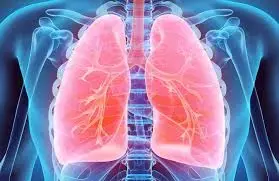- Home
- Medical news & Guidelines
- Anesthesiology
- Cardiology and CTVS
- Critical Care
- Dentistry
- Dermatology
- Diabetes and Endocrinology
- ENT
- Gastroenterology
- Medicine
- Nephrology
- Neurology
- Obstretics-Gynaecology
- Oncology
- Ophthalmology
- Orthopaedics
- Pediatrics-Neonatology
- Psychiatry
- Pulmonology
- Radiology
- Surgery
- Urology
- Laboratory Medicine
- Diet
- Nursing
- Paramedical
- Physiotherapy
- Health news
- Fact Check
- Bone Health Fact Check
- Brain Health Fact Check
- Cancer Related Fact Check
- Child Care Fact Check
- Dental and oral health fact check
- Diabetes and metabolic health fact check
- Diet and Nutrition Fact Check
- Eye and ENT Care Fact Check
- Fitness fact check
- Gut health fact check
- Heart health fact check
- Kidney health fact check
- Medical education fact check
- Men's health fact check
- Respiratory fact check
- Skin and hair care fact check
- Vaccine and Immunization fact check
- Women's health fact check
- AYUSH
- State News
- Andaman and Nicobar Islands
- Andhra Pradesh
- Arunachal Pradesh
- Assam
- Bihar
- Chandigarh
- Chattisgarh
- Dadra and Nagar Haveli
- Daman and Diu
- Delhi
- Goa
- Gujarat
- Haryana
- Himachal Pradesh
- Jammu & Kashmir
- Jharkhand
- Karnataka
- Kerala
- Ladakh
- Lakshadweep
- Madhya Pradesh
- Maharashtra
- Manipur
- Meghalaya
- Mizoram
- Nagaland
- Odisha
- Puducherry
- Punjab
- Rajasthan
- Sikkim
- Tamil Nadu
- Telangana
- Tripura
- Uttar Pradesh
- Uttrakhand
- West Bengal
- Medical Education
- Industry
Extremely preterm infants show persistent airway obstruction during adulthood

According to a recent study published in the journal Thorax, extremely preterm infants show lower lung function in adulthood than full-term babies.
Lifelong pulmonary consequences of being born extremely preterm or with extremely low birth weight remain unknown. They aimed to describe lung function trajectories from 10 to 35 years of age for individuals born extremely preterm and address potential cohort effects over a period that encompassed major changes in perinatal care. They performed repeated spirometry in three population-based cohorts born at gestational age ≤28 weeks or with birth weight ≤1000 g during 1982–85, 1991–92 and 1999–2000, referred to as extremely preterm-born, and in term-born controls matched for age and gender. Examinations were performed at 10, 18, 25 and 35 years. Longitudinal data were analysed using mixed models regression, with the extremely preterm-born stratified by bronchopulmonary dysplasia (BPD).
Results:
They recruited 148/174 (85%) eligible extremely preterm-born and 138 term-born. Compared with term-born, the extremely preterm-born had lower z-scores for forced expiratory volume in 1 s (FEV1) at most assessments, the main exceptions were in the groups without BPD in the two youngest cohorts. FEV1 trajectories were largely parallel for the extremely preterm- and term-born, also during the period 25–35 years that includes the onset of the age-related decline in lung function. Extremely preterm-born had lower peak lung function than term-born, but z-FEV1 values improved for each consecutive decade of birth (p=0.009). More extremely preterm—than term-born fulfilled the spirometry criteria for chronic obstructive pulmonary disease, 44/148 (30%) vs 7/138 (5%), p<0.001.
Thus, after extremely preterm birth, lung function was tracked in parallel but significantly below the trajectories of term-born from 10 to 35 years, including the incipient age-related decline from 25 to 35 years. The deficits versus term-born decreased with each decade of birth from 1980 to 2000.
Reference:
Tracking of lung function from 10 to 35 years after being born extremely preterm or with extremely low birth weight by Tonje Bårdsen et al. published in the Thorax
https://thorax.bmj.com/content/early/2022/04/10/thoraxjnl-2021-218400
Dr. Shravani Dali has completed her BDS from Pravara institute of medical sciences, loni. Following which she extensively worked in the healthcare sector for 2+ years. She has been actively involved in writing blogs in field of health and wellness. Currently she is pursuing her Masters of public health-health administration from Tata institute of social sciences. She can be contacted at editorial@medicaldialogues.in.
Dr Kamal Kant Kohli-MBBS, DTCD- a chest specialist with more than 30 years of practice and a flair for writing clinical articles, Dr Kamal Kant Kohli joined Medical Dialogues as a Chief Editor of Medical News. Besides writing articles, as an editor, he proofreads and verifies all the medical content published on Medical Dialogues including those coming from journals, studies,medical conferences,guidelines etc. Email: drkohli@medicaldialogues.in. Contact no. 011-43720751


